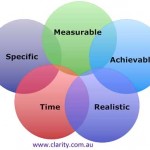Organisation Function versus Process?

Thinking of a business in terms of functional areas only can encourage duplication of information systems, create border communication and control problems and set a focus on achieving internal efficiencies in functional areas that may not benefit the enterprise.
The traditional organisational chart views the organisation by functional areas such as marketing, accounting, production and so on and makes no reference to customers, products, services or work flows and yet these are essential parts of a business. This is the rational for developing a ‘systems and process’ model as an alternative way of looking at an enterprise. When looked at this way value chains can be identified and optimised.
This however raises issues between “lumpers” who want to “include everything that is even vaguely similar and arrive at one or very few values chains” (Harmon) and the “splitters” who can end up with many value chains. There is no right answer and consensus needs to be achieved from within the organisation.
Strategy
A business strategy defines how a company will compete, what its goals will be, and what policies it will support to achieve these goals. Defining a strategy is important because this, in essence, becomes the reason for a business to exist. Porter (Competitive Strategy, 1980) advocated an essentially three phase process of determining what the company is doing now, what is happening in the external environment and what the company should do next. He describes generic strategies such as cost leadership, differentiation or niche specialization and the need to be able to construct or maintain a competitive advantage by using value chains related to strategic positioning rather than operational efficiency alone. He warns of ‘hyper competition’ where companies are locked in a race to improve operational efficiency that in the long run cannot be sustained because competitors will also be able to achieve this.
A business needs to create a ‘value proposition’ and develop a strategy around this. Activities must be aligned, and if possible tightly integrated with the strategy position to not only to support the strategy but to also protect that position from competition.
So what does this mean for your Organisation?
The functional organisation of an enterprise is also critical to its success and therefore the challenge for many organisations is to align processes with functional areas. For instance if the organisation is essentially on a common platform with a seamless integration of IT infrastructure and information systems then to a large extent the oft heard criticism of information ‘silos’ and communication ‘road blocks’ created by functional areas maintaining their own systems, databases and processes can be alleviated.
Functional areas can contribute capacity to the enterprise in ways that do not always neatly fit the current ‘value chain’, particularly in a changing environment where agility is also an element of success. Therefore functional areas often need to respond faster than many enterprise information systems and processes will allow. Whilst for some industries, especially mining and manufacturing, optimizing a value chain is crucial and a process driven model can achieve this, it should not be assumed this will always be the case.
For example many organisations are transitioning to Cloud/Internet based services and applications at a significant competitive advantage to organisations locked into their own enterprise wide systems. It has been the functional areas who are best able to identify and develop efficiency’s, long before the enterprise was able to leverage, or even define these, as part of their value chain. They were able to enter new markets or take customers from competitors simply because they had developed a capability that at the time may have actually appeared disruptive to their existing value chain.
Porter introduced the idea of a value chain to think of processes as complete entities from the customer purchase through to fulfillment and so therefore perhaps this alternative view of functional areas is not incongruous with the definition of a value chain. The important concern is that functional areas remain integrated to the value chain and strategy of the organisation.
Nevertheless I have trouble with the concept that each activity in a value chain should, or must, add value to the final product when clearly there are activities or steps that don’t add value directly, but facilitate the adding of value later, or enable an organisation to respond quickly to new opportunities. There is an opportunity cost that cannot be ignored for some organisations. There is also the overhead of compliance or government regulation hindering efficient process management so generally no organisation is able to completely do away with processes that don’t directly add value (although the ability to stay in business must be considered as adding value!).
The real reason for optimizing a value chain is to identify activities which don’t add value and have become, for one reason or another, not relevant to the process.
[This is an extract from an essay I wrote as part of a Master of Commerce assignment – Doug Robb, Clarity Software]
References:
- Porter, M.E. (1980) Competitive Strategy, Free Press, New York, 1980.
- Harmon, P. (2003). Business process change: A manager’s guide to improving, redesigning and automating processes: Morgan Kaufmann.








